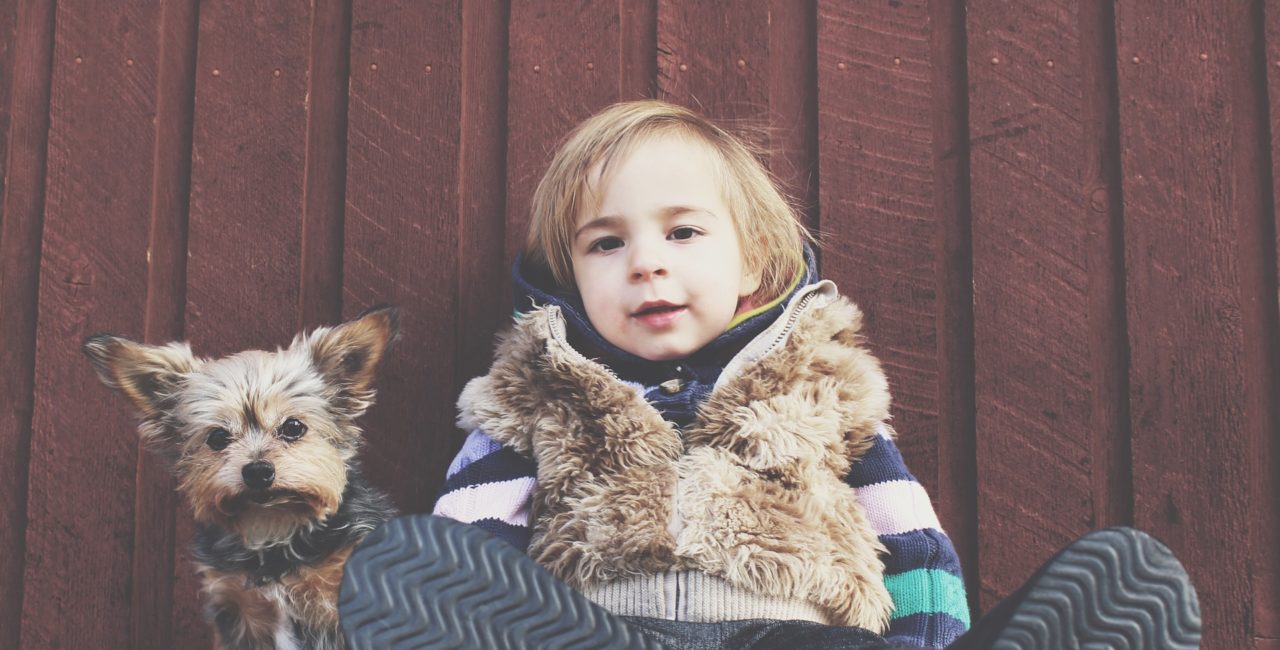With a mobile, loud and very curious toddler around your home the family pet is tested daily with your child’s safety as the variable. Your pet will be exposed to toys being tossed around, banging, squeals of joy, standing, falling and worst of all a child coming at the dog pulling hair or hitting, not to mention a teething child who likes to bite everything! These are all normal actions of a growing & learning toddler that need to be safeguarded for the emotional well being of your dog and the safety of your child.
From a very early age (3 – 4 months old) the parent should frequently use the child’s hand to pet the dog. This will ingrain a calm touch. Very strict rules your child should learn are:
- 1 hand is enough to pet
- Pet from collar to tail
- Dogs do not like hugs and kisses
Babies and toddlers should never interact without direct supervision. Interaction should never be forced – for example; calling a pet over and telling it to sit and stay so the child can touch it or taking the child over to the pet so the child can talk. Allow interaction only when the pet comes to you and the child together.
Remember your child learns by imitation so any way you touch and play with the family pet your toddler will copy.
Your toddler is now able to move around your home and this creates areas of Grumble Zones for your pet. Grumble Zones are areas of limited space where your dog has trouble getting away from your child and therefore putting your child in danger. You need to declutter the home to reduce the number of grumble zones. This might be as simple as moving a coffee table to open up a room. There are also Growl Zones in your home that must be avoided. This includes areas like under the table, areas of no escape or just increased resource space (your dog’s favourite carpeted area).
Never stop a dog from grumbling or growling as this is your pet’s warning to you and your child before biting.
If you take away the growl you take away the warning. Before growling you may also see warnings such as licking lips, yawning or even a sideways glance where you see a half moon of white in the dog’s eyes.
The bite threshold your dog may have can be reduced with increased stressors. These may include a trip to the Veterinary Hospital, a thunderstorm, if you are giving meds to the pet etc. Be more aware of your dog when the daily balance is upset. A playdate with another child at your home can be an extreme stressor, it is best to put your dog outside or in another room during these times. You can not control how another child will interact with your pet, nor can you predict how your pet will behave with this added stress in your home.
As with children “NO” does not give enough direction. The dog needs to be given appropriate instructions as to what is acceptable behaviour.
When children become school age we put more of an onus on them to keep safe around dogs but we need to give them the tools to do so. There is a program called the “BE A TREE” program that I offer free of charge through Hillcrest Animal Hospital. The program teaches children from ages 4 to 10 how to read a dog’s body language and recognize warning signs, as well as what dogs are safe to approach and who to stay away from. This program is often presented to groups of 10 – 30 children at schools, scouting groups or day cares. If you are interested please feel free to call us at 613-394-4811 or email at info@hillcrestanimalhospital.ca
Veterinary Care is more like family care. We will do everything we can to help keep the “Human – Animal Bond” between you and your pet intact and strong because as you know Dogs really are a Human’s Best Friend.




